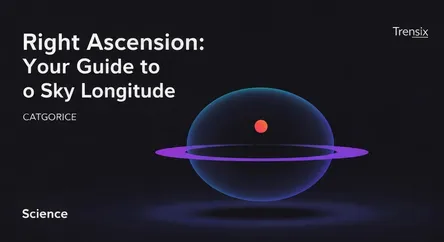Science
Right Ascension: Your Guide to Sky Longitude

Discover right ascension, the celestial equivalent of longitude. Learn how astronomers use this coordinate to map and locate stars, galaxies, and planets.
What is it?
Right ascension (RA) is one of the two coordinates used to pinpoint an object's position on the celestial sphere, the imaginary sphere surrounding Earth. Think of it as the celestial equivalent of longitude. While longitude is measured in degrees, right ascension is measured in hours, minutes, and seconds, from 0 to 24 hours. The starting point for RA, 0 hours, is the vernal equinox—the point where the Sun crosses the celestial equator in spring. This system creates a fixed grid on the sky, allowing astronomers to create a consistent map of stars and other objects that doesn't change based on your location on Earth.
Why is it trending?
Interest in right ascension is growing with the boom in amateur astronomy and astrophotography. Modern "GoTo" telescopes rely on right ascension and its counterpart, declination, to automatically find and track thousands of celestial objects. As missions like the James Webb Space Telescope make incredible discoveries, more people are curious about how astronomers locate these distant galaxies. Stargazing apps and software also use these coordinates to show users exactly what they are looking at in the night sky, making the cosmos more accessible to everyone.
How does it affect people?
For astronomers and stargazers, right ascension is fundamental. It's the language they use to share the locations of comets, supernovae, or interesting stars. Without it, finding a faint object in the vastness of space would be nearly impossible. This coordinate system allows a telescope in Chile and another in Hawaii to point to the exact same object. For the public, it's the invisible framework behind planetarium software and apps that bring the night sky to life on our screens, fostering a deeper connection to the universe.